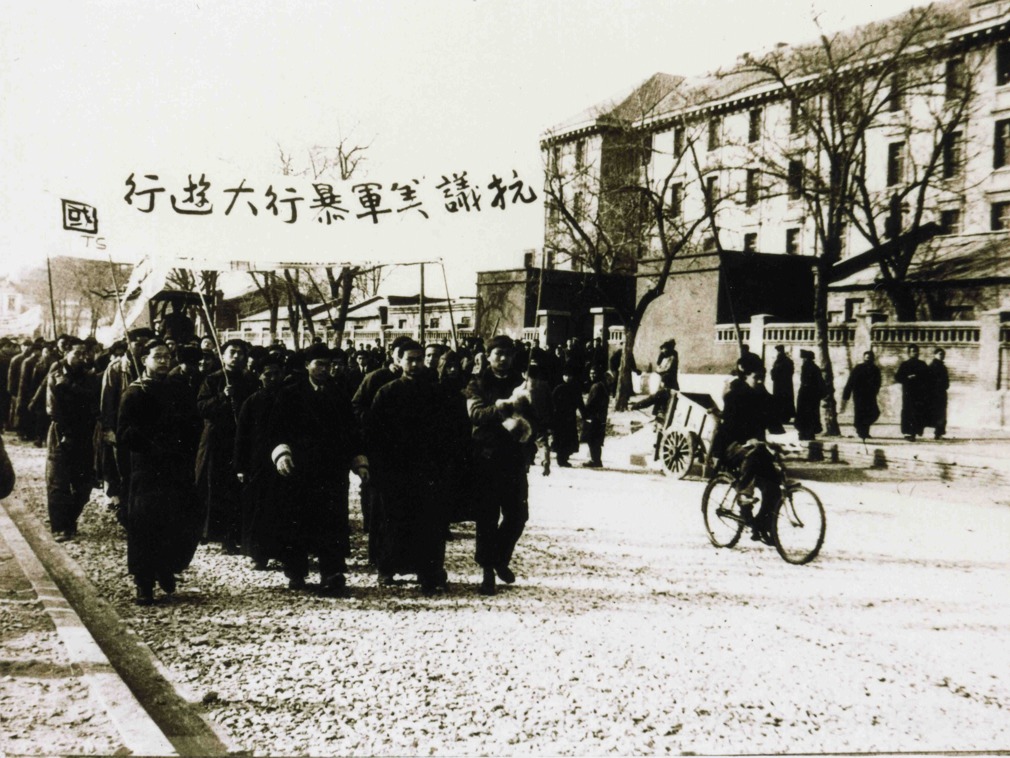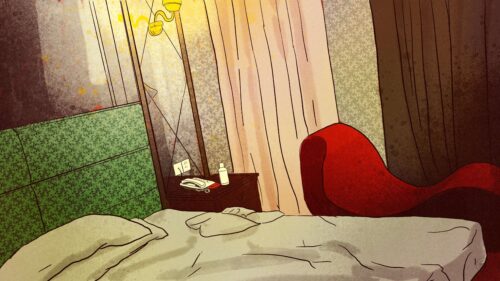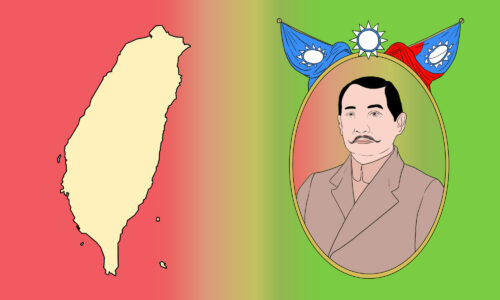This Week in China’s History: December 24, 1946
Writing for the New York Times on Christmas Eve 1946, columnist Benjamin Welles described a festive scene worthy of Dickens. “It is Christmastide in Peiping,” he begins, using the city’s name between 1927 and 1949. “Throughout the city ring the gay shouts and cries of Peiping’s street peddlers…Shop windows are filled with every gay variety of goods; Japanese holdovers, newly arrived imports from the United States, native curios, and other handicraft. Colorful banners proclaim ‘Marrie Christmas,’ or ‘Season’s Greetings.’”
“At the Headquarters of the Fifth Marine Regiment,” he went on, “Christmas trees and wreaths have sprung up overnight and a three-day holiday prevails. Christmas turkeys have been provided by the service quartermasters for the armed forces in Peiping and it is certain none will go short.”
For “2,000 American Army personnel and dependents, the Christmas spirit has fully pervaded,” Welles added.
Much of that spirit was focused at the American consulate, which was hosting a party on Christmas Eve. Diplomatic staff and their families, as well as military personnel, celebrated the holiday far from home. As the official festivities wound down, some soldiers continued at a military bar nearby. Two of them were Corporal William Pierson and Private Warren Pritchard.
Welles noted that most Chinese paid the Christian holiday no mind, writing that “to the masses it is but another cold midwinter day.” One of them was a 19-year-old college student named Shěn Chóng 沈崇. Shen had recently come to Beiping from Shanghai, and was living with her aunt while she attended Peking University. That Tuesday evening, she and a friend walked from their home to the Ping’an Theater, but once there, Shen’s friend realized that she had already seen the film being shown and decided to leave. Shen stayed though, and watched the movie.
At around 8 p.m. — several hours after sunset in north China’s midwinter —the movie ended and Shen headed home. Alone, she thought, but in fact followed by Pritchard and Pierson. Within sight of the American consulate, the two men forced Shen onto a deserted sports field. They were observed by a work detail of Chinese soldiers who protested but did not intervene, instead seeking assistance from the joint Chinese-American police force that was tasked with keeping order in the city.
When they arrived, the police found Shen in the field, her clothes torn and covered in mud. Although Pierson had fled the scene, the crowd of Chinese soldiers had kept Pritchard from leaving, and he was arrested near midnight, though he was soon released into the custody of American military police. Taken for questioning to police headquarters, Shen said that Pritchard had held her down while Pierson raped her, twice, details corroborated by witnesses at the scene. Pierson was soon after arrested on charges of rape, with Pritchard charged as an accomplice.
Word of the assault spread quickly. American officials added fuel to the fire by suggesting, first, that the sex had been consensual (contradicting the testimony of the victim, witnesses, police, and hospital personnel) and then insinuating that the relationship had been “professional” and that Shen — the daughter of a Chinese government official — had been working as a prostitute. Worried about their alliance with the U.S. as the Civil War against the communists ramped up, KMT officials followed suit, questioning Shen’s morals rather than those of her attackers.
Outraged students at Beijing’s largest campuses went on strike and ten thousand students staged a protest march on December 30. The march began at Yenching and Tsinghua universities and proceeded for seven miles into the city. “Brigades of poster-pasters and sidewalk writers covered every available space with signs,” according to a New York Times article. “‘Our Chinese daughters are not to be insulted,’ ‘You are lonely, you are homesick — go home,’ and ‘U.S. soldiers can do nothing but kill and rape.’”
“The Peiping students, one-third of them girls, pasted placards on street cars and buildings and shouted: ‘Go home, U.S. Army, go home!’”
The response went far beyond Beijing. “Anti American Violence” protests erupted across China. The largest was in Shanghai, where more than 20,000 protesters marched, but thousands of people took to the streets in cities across China, including Tianjin, Xuzhou, Nanjing, Kunming, and Guangzhou.
Actions like these fed into the students’ understanding of what had happened as not only an assault on a single woman, but representing the general attitude of Americans toward China and the Chinese. As historian Robert Shaffer wrote, “The students attributed these problems not to the lack of discipline of an individual marine, but a ’psychological reaction expressed by the American marines who look down upon the Chinese people’ due to their colonist mentality.”
The rape of Shen Chong was in many ways the straw that broke the camel’s back. Historian Du Chunmei documents a list of offenses reported by Chinese newspapers of the time, perpetrated by American GIs against Chinese women from all walks of life:
“Two working-class girls in Shanghai barely escaped assault by two GIs and one sailor who stabbed local police with knives; an official’s wife in Nanjing was raped outdoors and injured after watching a night show; and a factory worker in Qingdao was gang-raped and pushed down a hill.”
Perhaps influenced by the protests, the military moved with surprising speed to resolve the case. Pierson went on trial in a Navy court martial on January 18, and five days later was convicted and sentenced to fifteen years hard labor (reduced from an initial sentence of life imprisonment). Pritchard was found guilty of lesser charges, and sentenced to ten months hard labor.
Convictions were rare in cases like this; often perpetrators were not even arrested, let alone charged, convicted, and sentenced. But in this one instance, at least, justice was done.
Or was it?
Citing concerns over procedure, the two Americans were retried, this time in America. American officials insisted that Shen come to the U.S. to be examined, presumably over questions that she had been raped. When Shen refused this humiliation, the two men were acquitted. On August 11, the Secretary of the Navy, James Forrestal, set aside the convictions, asserting that “the evidence had been insufficient.” Both men walked free.
The effects of the Shen Chong case went far beyond the events of December 1946. Historian James Cook describes how “on the first anniversary of the rape, Beiping students again took to the streets in order to pay tribute to Shen. A solemn procession marched past the scene of the crime towards the U.S. compound.” In the context of the time, now more than two years removed from Japan’s defeat and with a civil war underway, the U.S.now took on a new role, not as an ally and supporter, but as a new colonizer. Chinese students, and many intellectuals, questioned not only the value and intentions of their American “protectors,” but of the Chinese government that had vilified a 19-year-old woman who had been assaulted by drunken soldiers. Support for the U.S., and the KMT, slipped. The KMT government fell within three years of the attack, and fled to Taiwan.
It is easy to lose the personal side of this story, buried under the geopolitics. Shen Chong’s life was irrevocably changed by her experience. She changed her name in pursuit of privacy, graduated from Fudan University in Shanghai, and remained in China after the communist victory, working for the Foreign Languages Press for many decades. She passed away in 2014.
This Week in China’s History is a weekly column.






